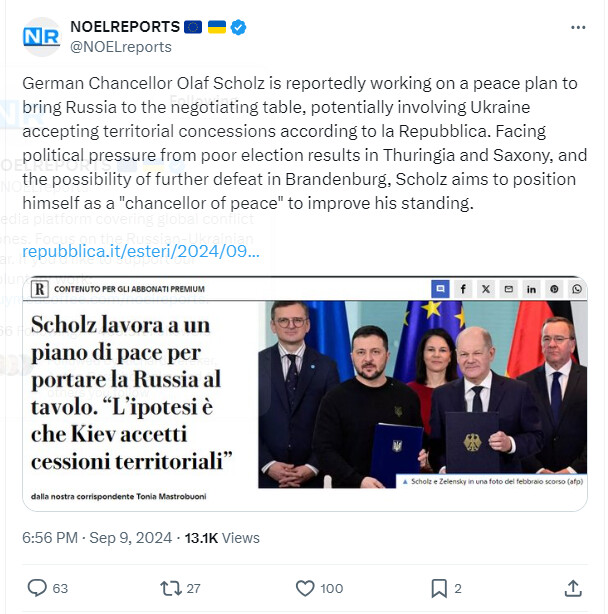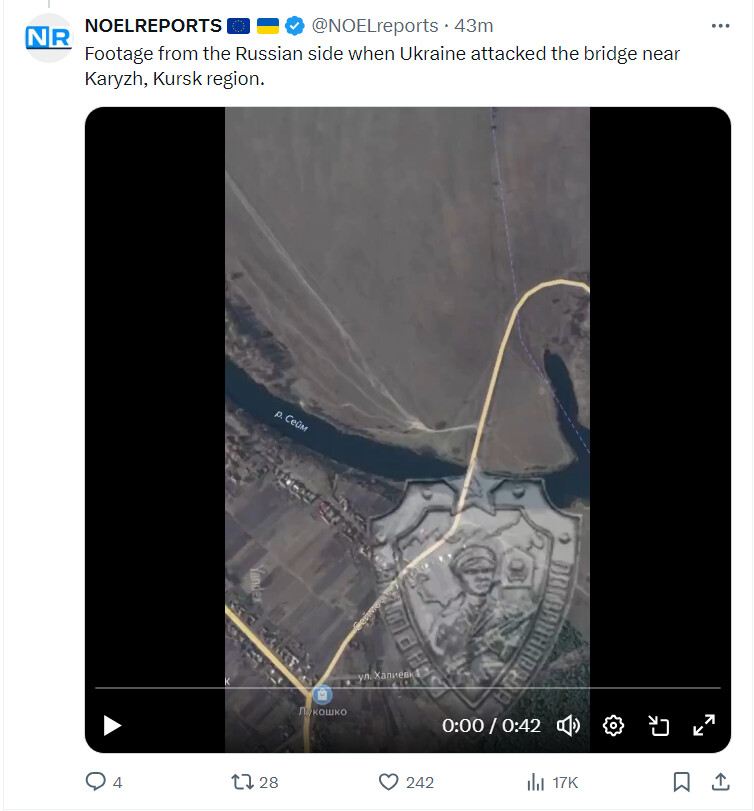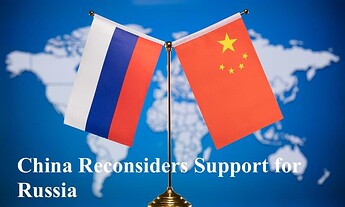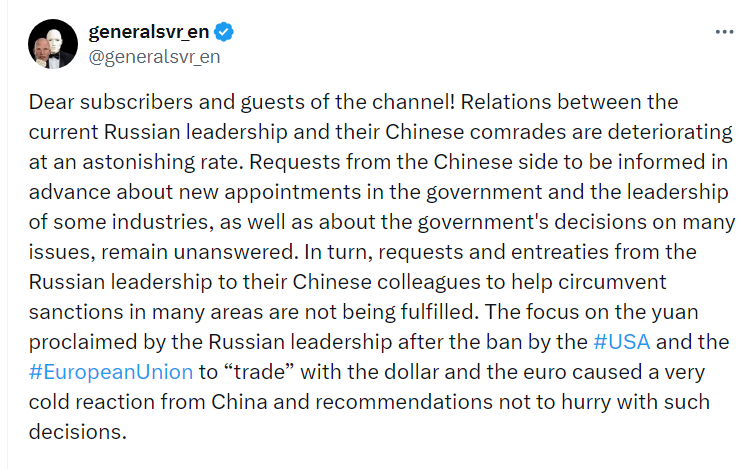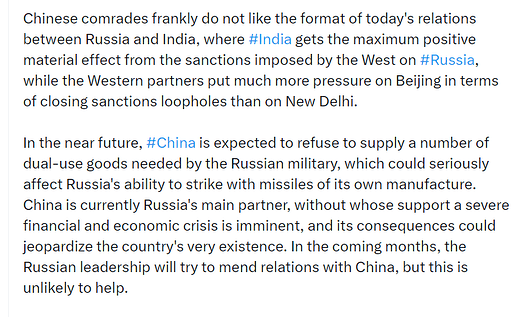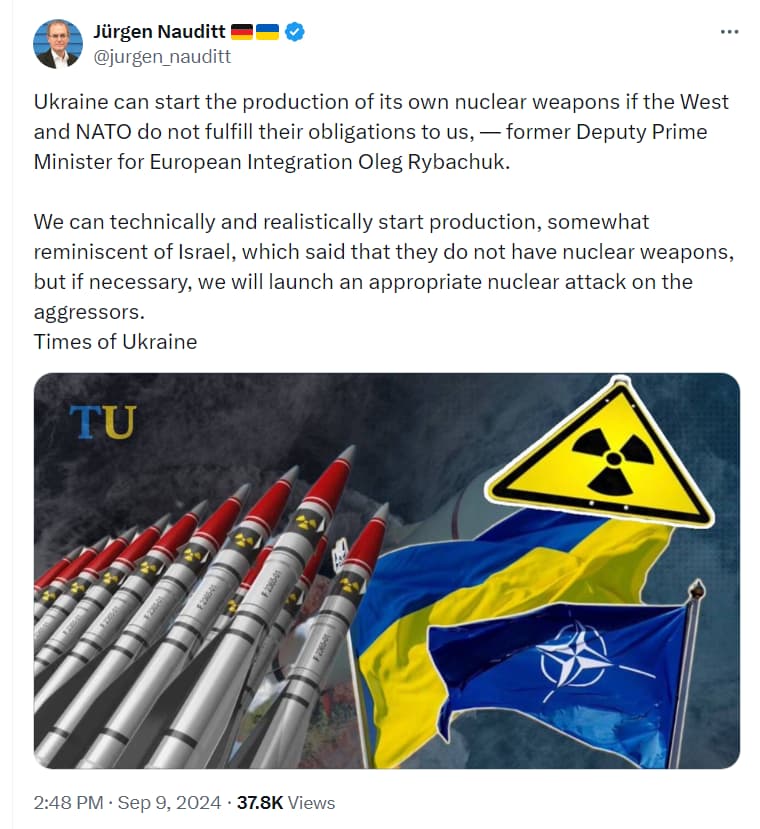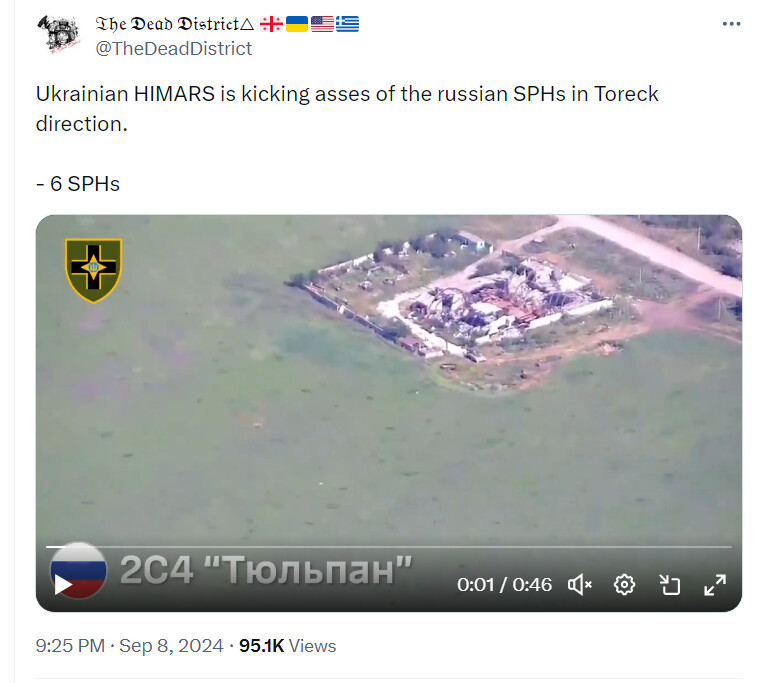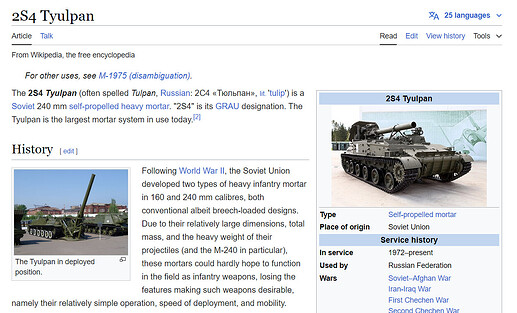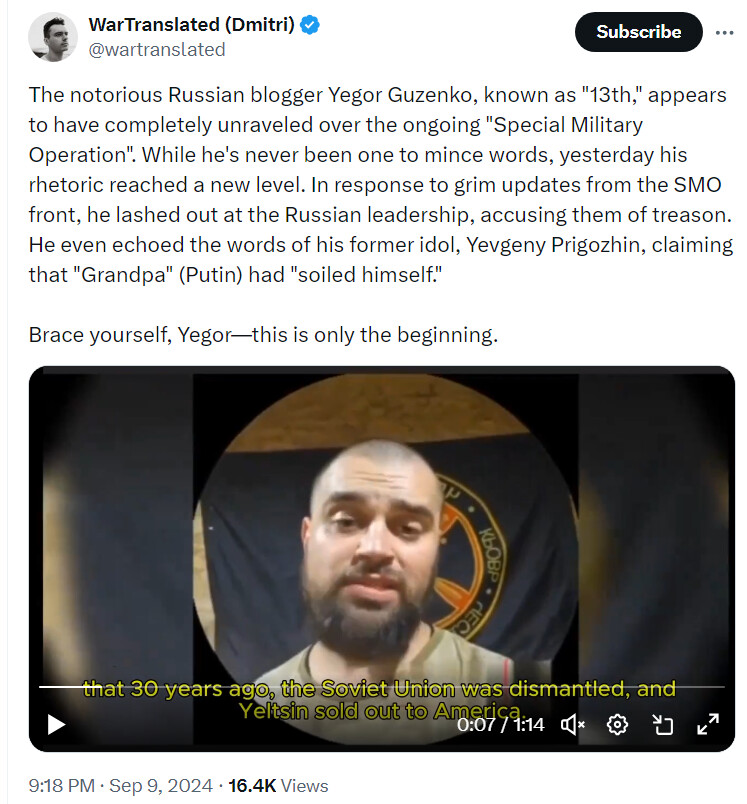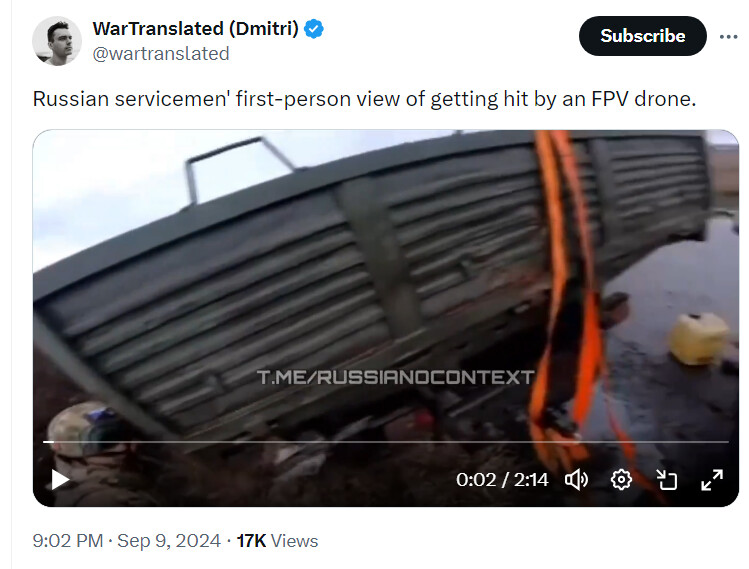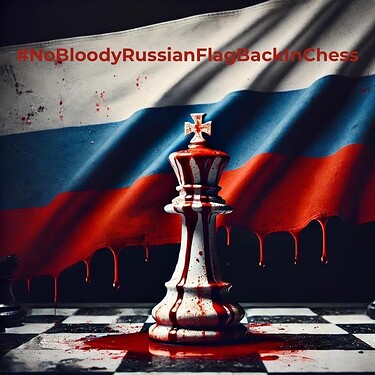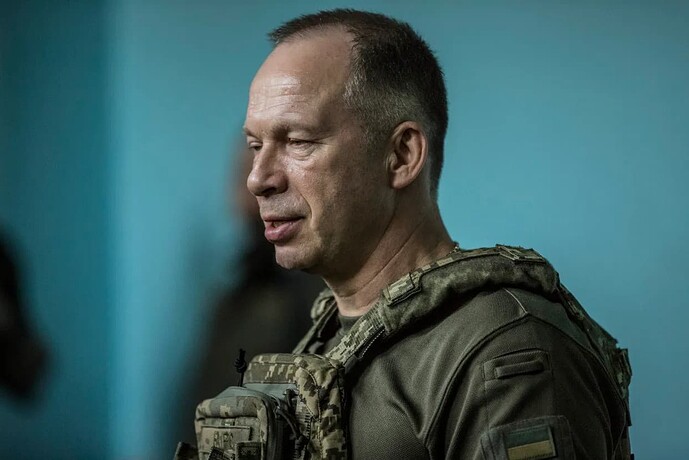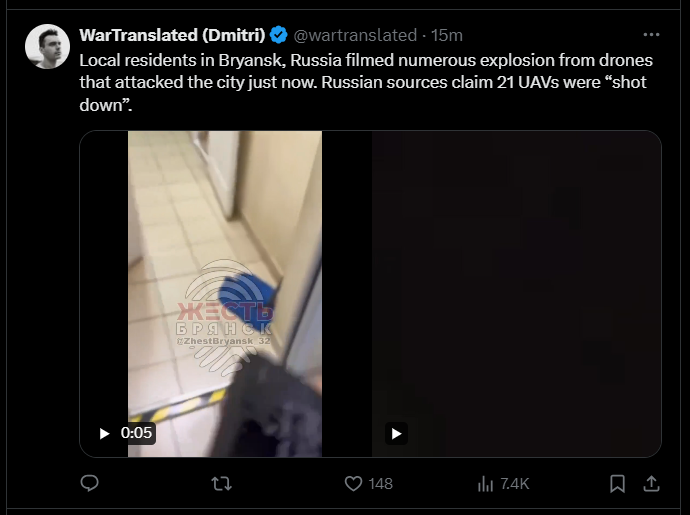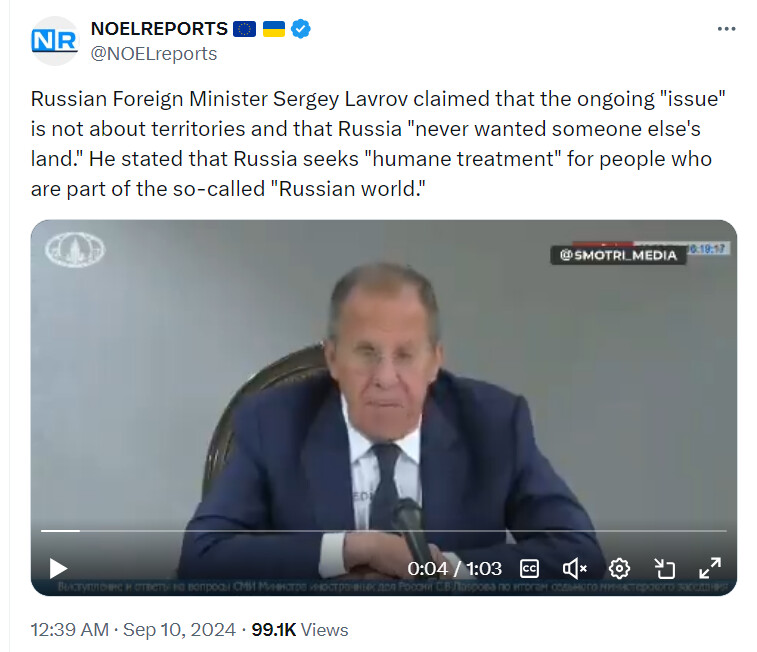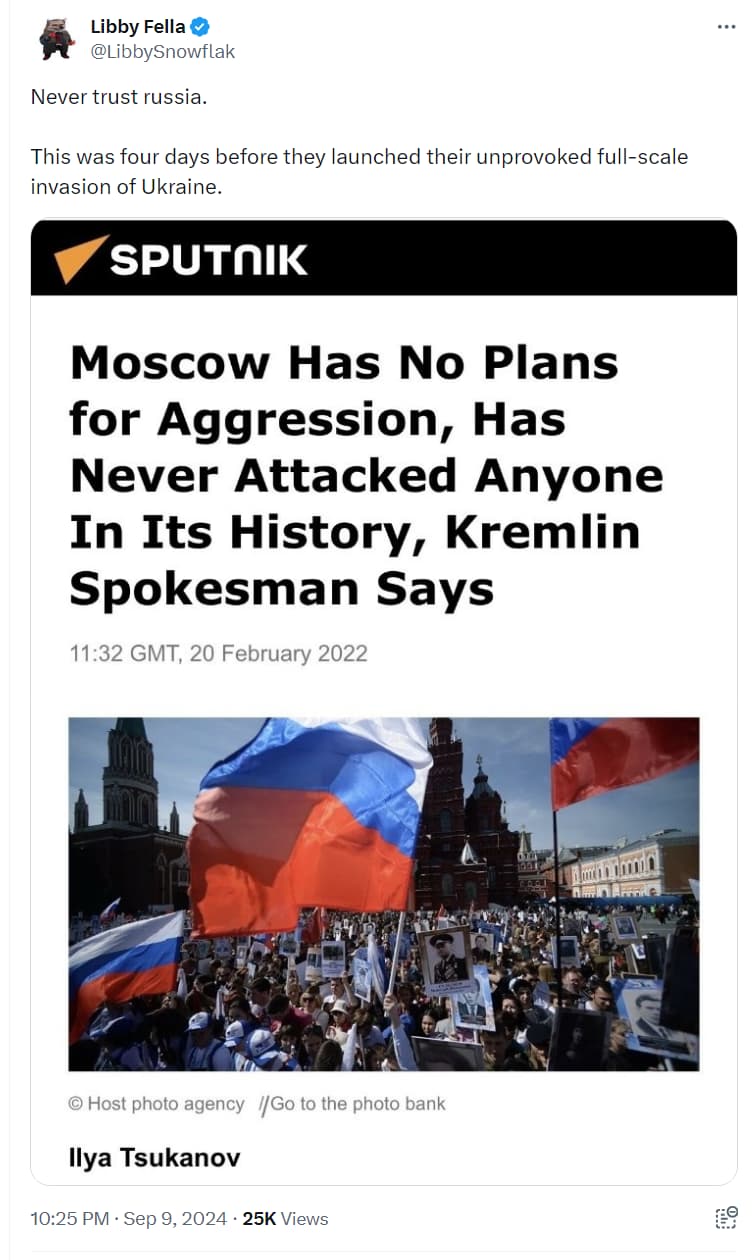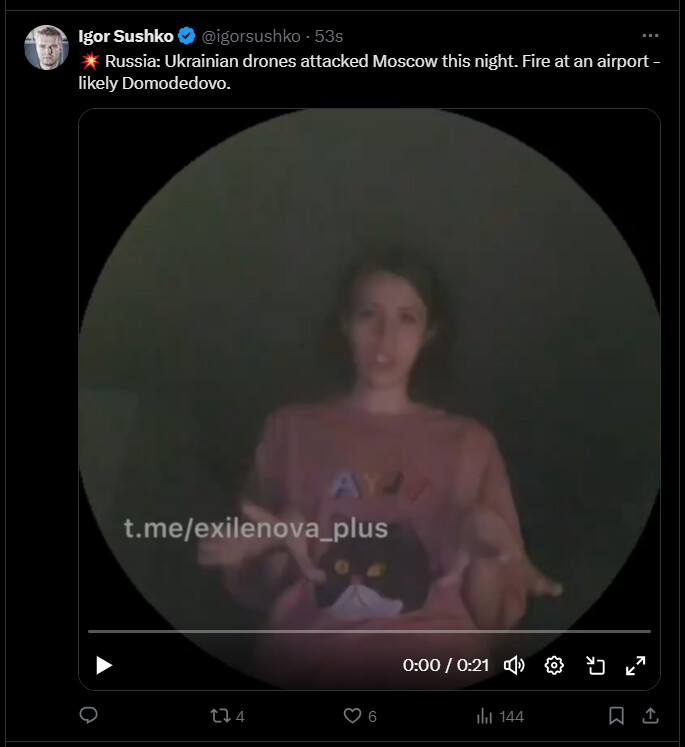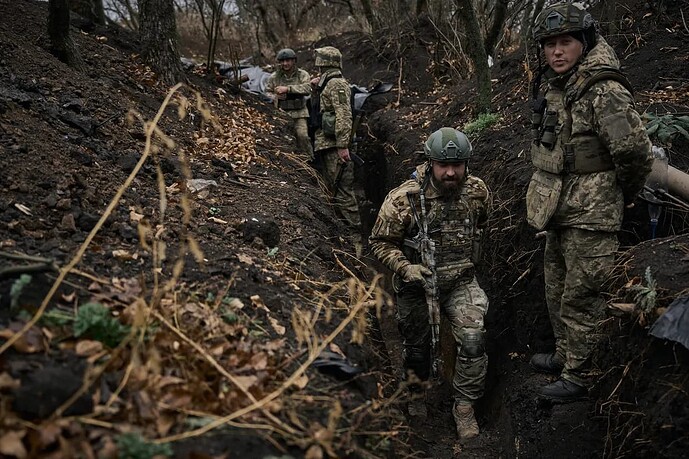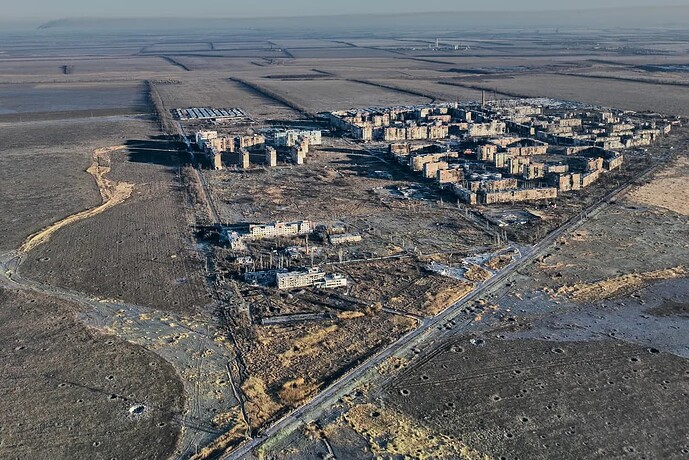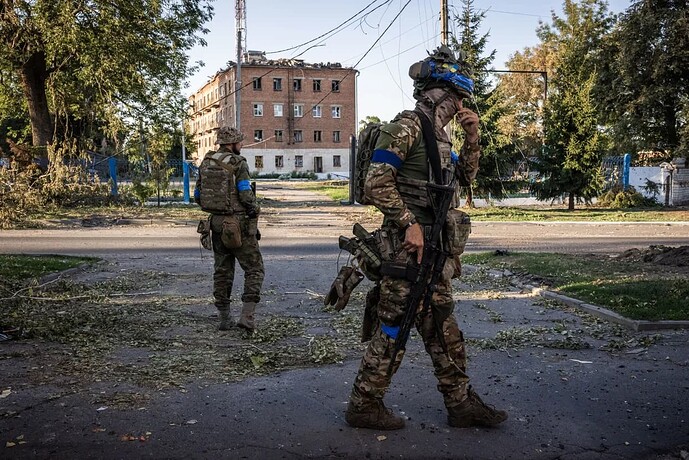“potentially involving Ukraine accepting territorial concessions”
Of course Scholz is. Chancellor of appeasement.
AFAIK cargoes of grains and oilseeds are being shipped pretty much unimpeded by Ukraine and Russia through the Black Sea, at a time when Red Sea commercial shipping is under attack. The international waters and air space in the Black Sea are mostly free of conflict, apart from some skirmishes.
There’s a global interest in keeping it that way. The escalation of warfare in control of Crimea may not keep it that way.
While the public focus has been on the NATO/ Russia land borders, three of the coastal States bordering the Black Sea are NATO countries, with its southern flanks strengthened.
AFAIK Turkey continues to exercise its rights under the Montreux Convention to limit the entry of warships other than those returning to home base. Turkey can be an uncertain NATO partner.
IDK whether current NATO redlines on long range missiles for Ukraine are in any way connected to Black Sea considerations, including the outcomes of any peace settlement which would involve arrangements for the Black Sea international waters to become a military free zone.
Well, if they still have the technical expertise, the blueprints and the workforce with the skills I can’t see how the US can stop them. What are they going to do, sanction them? Cut off their arms supply and monetary help? If Trump is elected then that is going to happen anyway.

BUMP
Go home Ivan.
Looks like Kamyshin has been given a special and very specific side mission.
On September 22, a meeting of the FIDE chess General Assembly is scheduled in Budapest, where the agenda includes the issue of “restoring the full rights of the national chess federations of russia and belarus.”
It’s about the return of the right for the teams of aggressor countries to participate in international competitions under their own flags and anthems. russia and belarus also want to regain the right to host international tournaments under the flag of FIDE on their territory.
I would like to remind you that currently, neither the russian nor the belarusian national teams have the right to participate in international competitions under the auspices of FIDE, and their chess players can only compete in tournaments under the neutral FIDE flag.
This issue was brought to the agenda by the Chairman of the Chess Federation of the Kyrgyz Republic, Babur Tolbaev.
While chess players in Ukraine are killed by russian military terrorists, there is no place for the russian and belarusian flags at chess tournaments. The russian anthem has no right to sound in the countries of the free world.
Moreover, no self-respecting chess player who values their reputation will go to a country that is daily killing the peaceful people of another country.
I would like to remind you that since the beginning of the Great War, 21 chess players have already been killed in Ukraine, and two more chess players are still missing. And these are only the data that are currently known.
Therefore, on behalf of the Ukrainian Chess Federation, I officially declare our categorical disagreement on this agenda item. I urge FIDE to remove this issue from the agenda.
-
All official appeals from the Ukrainian Chess Federation to FIDE will be sent by the end of the week. All appeals to the national federations of FIDE member countries will be sent similarly.
-
I ask our grandmasters to reach out to their colleagues from other countries. National federations need to hear our chess players. FIDE must hear grandmasters from around the world.
Ukraine’s Drone Strike Radius Now 1,800 km – What’s on Kyiv’s Target List?
The alleged range stated by Ukraine’s intelligence chief on Saturday would theoretically allow Kyiv to reach Russia’s Ural Mountains and cover dozens of airfields used to launch jets against Ukraine.
September 9, 2024, 3:42 pm
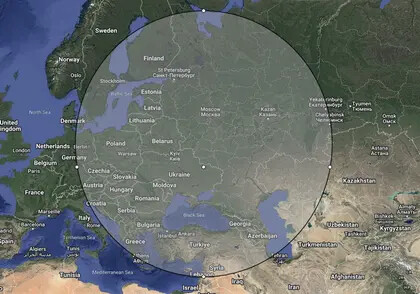
A map made using Maps Developers depicting the 1,800 kilometers (1,118 miles) range assuming the drones were launched from Kharkiv, Ukraine’s eastern regional capital bordering Russia. Photo: Kyiv Post
Kyrylo Budanov, head of Ukraine’s Defense Intelligence (HUR), said on Saturday that drones produced in Ukraine at present could reach a maximum range of 1,800 kilometers (1,118 miles).
In a Facebook announcement commemorating the Day of Military Intelligence on Saturday, Sept. 7, Budanov said the drones were developed by specialists, including those employed by the HUR.
"Military airfields, which are a source of constant threat to peaceful Ukrainian cities, shudder from air attacks. The entire infrastructure of Russia, working for the war, has suffered and will suffer losses. After all, instead of defending its own, Russia chose the wrong path of an unprovoked war and an attack on sovereign lands of the state,” said Budanov in his announcement.
Budanov did not specify the models of the drones, nor whether they’d been used in previous drone strikes against Russian targets.
Ukraine’s Drone Strike Radius
Assuming the drones were launched from Kharkiv, Ukraine’s eastern capital bordering Russia, the alleged range of 1,800 kilometers (1,118 miles) would theoretically allow Ukraine to reach the Ural Mountains that separate the European and Asian parts of Russia, with cities such as Yekaterinburg and Chelyabinsk lying on the edge of said range.
Media reported a fire near a military factory in Yekaterinburg in July, and HUR reported a burned-down Su-34 tactical bomber at the Russian “Shagol” airfield in Chelyabinsk. However, HUR did not claim responsibility for either incident.
The alleged range also covers airbases in Russia-friendly Syria, where Kyiv Post received an exclusive video from HUR when it struck Russian troops stationed at the Kuweires airbase east of Aleppo.
Theoretically, the radius would cover the majority of – if not all – Russian airfields hosting Russian warplanes used against Ukraine.
While the Olenya airfield in Murmansk, which hosts long-range bombers and is located in the Arctic Circle, appeared to lie outside the 1,800-kilometer radius, HUR also claimed to have struck a TU-22M3 strategic bomber there in July.
The claim, if true, would likely mean the range of Ukrainian drones exceeded what Budanov stated, or that they were potentially launched from outside Ukrainian territories.
Striking Russian airfields?
Budanov specifically mentioned the attacks on Russian airfields in Saturday’s announcement.
To counter Russian aerial threats – which often come with jets launching bombs and missiles against Ukraine from within Russian airspace – Kyiv has been calling for the West to lift restrictions on Western-provided long-range weapons to eliminate the threats from their source, namely airfields.
Western long-range weapons in Kyiv’s possession included the US-made Army Tactical Missile System (ATACMS), which has a range of 300 kilometers (186 miles), and the UK-provided Storm Shadow cruise missile, which has a range of over 250 kilometers (155 miles).
However, the West has thus far refused to lift the restrictions for fear of escalation.
If Ukraine has had some success striking targets inside Russia, including oil facilities and airfields, with domestically-produced unmanned aerial vehicles (UAVs) instead, why is there a need for Western long-range weapons?
It’s likely to do with the windows of opportunity.
While Western long-range weapons generally have more firepower and are more accurate – with the added possibility of being equipped with target-specific warheads – their high speed is likely the decisive factor in striking airfields.
With drones, it can take hours to reach their targets – albeit more discreetly than missiles at times – at which point Moscow could simply re-deploy the warplanes, and the threat is averted.
With missiles, however, there would be little warning time – especially for airfields closer to the Ukrainian border – with the added benefit that it is more difficult to intercept a missile flying at multiple times the speed of sound versus a subsonic drone at low speed.
Add the cluster munition warheads available for missiles such as ATACMS, and Ukraine has the perfect recipe for airfield strikes – and all it takes now is a green light from the West.
Sweden announces $440 million support package for Ukraine
September 9, 20249:11 PM GMT+8Updated an hour ago
STOCKHOLM, Sept 9 (Reuters) - Sweden will send its 17th aid package to Ukraine with further military support totalling 4.6 billion Swedish crowns ($443 million), Defence Minister Pal Jonson said on Monday.
The new package will include ammunition for infantry fighting vehicles already donated by Sweden, as well as purchases that would facilitate a transfer of Gripen fighter jets in the future, though no such transfer has been decided on yet.
“We want to have the ability to donate Gripens to Ukraine at a possible later stage,” Jonson told a press conference.
Jonson said support included additional combat boats, missiles and camouflage gear as well as funding to support defence procurements for Ukraine. The measures were decided in close collaboration with Kyiv.
About half of the value of the package consisted of parts needed in Sweden’s production of the latest model Gripen E fighters for its own air force. This would mean Sweden would not as previously planned need to cannibalize its existing C/D models as part of the upgrade, allowing the older jets to transferred to Ukraine at a possible future date.
“At present, it is not on the cards to transfer JAS Gripens to Ukraine as this would disturb the introduction of F-16s,” the government said in a statement.
($1 = 10.3724 Swedish crowns)
Ukraine fires 2 times fewer shells than Russia, reducing gap, Syrskyi says
September 9, 2024 11:40 AM
2 min read
Commander-in-Chief Oleksandr Syrskyi awards Ukrainian fighters of the 10th Mountain Assault Brigade “Edelweiss” in the Soledar direction on July 2, 2023 in Donetsk Oblast, Ukraine. (Yuriy Mate/Global Images Ukraine via Getty Images)
Russia is firing shells at a ratio of around 2:1; 2,5:1 to those of Ukraine, Commander-in-Chief Oleksandr Syrskyi said in an interview with CNN on Sept. 5, adding that Ukrainian forces are narrowing the gap.
In the spring, Ukraine faced an ammunition shortage largely due to delays in U.S. military assistance, which had a direct impact on the battlefield.
As of mid-April, Russia fired 10 times more shells than Ukraine, according to President Volodymyr Zelensky.
According to Syrskyi, Russia outnumbers Ukraine in terms of weapons and personnel, but Ukraine should use its “technical superiority,” focusing on high-tech weapons such as unmanned aerial systems.
“In addition, of course, we use maneuvers with force, reserves, and fire. Thanks to the actions of our government, the president of Ukraine, the minister of defense, we managed to reduce the difference between the ammunition used by us and the enemy,” said Syrskyi.
The Ukrainian military managed to reduce the difference between shells used by Kyiv and Moscow, compensating for this gap with drones, the general said.
Syrskyi also said that “significant changes” happened since the U.S. weapons started flowing to Ukraine after almost seven months of delays. Yet, Ukraine receives the arms “with the delay.”
“This is also a negative for us. Especially when it comes to the formation of new units or when a unit is formed and there is no equipment, no weapons, how should we perceive it?” the commander-in-chief said.
“You plan to use a mechanized brigade, but in fact you use it as an infantry brigade. As a result, its combat capabilities and effectiveness are much lower.”
Syrskyi’s words echoed remarks by Zelensky, who urged partners to speed up the supply of weapons. The president said in July that 14 Ukrainian brigades did not have necessary weapons “that have already been approved and discussed.”
Bump
I have almost never posted in this thread, but view it everyday, and appreciate the efforts by those who contribute.
I also listen to a podcast called Ukraine: The Latest put out by the Telegraph in the UK. Whilst the Telegraph isn’t a paper I would choose to read, the podcast is excellent. It provides great insight into the happenings in Ukraine.
Sadly the founder of the podcast, journalist David Knowles, died at the age of 32 on the weekend.
His commitment to the cause and telling the story of the Ukrainian plight was profound.
As with all things related to people outspoken on Russia, it has a cloud of suspicion over it.
Where have I heard this type of concept and language before? …
Oh, yeah…something, something Sudetenland Germans
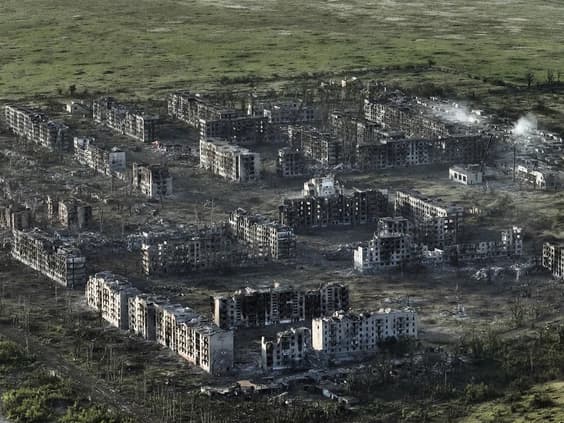
Русский мир The “russian world” of Chasiv Yar
Russia ramps up offensive on Vuhledar, Ukrainian stronghold in the east
September 9, 2024 11:08 PM
6 min read
While the Russian advance on Pokrovsk had slightly slowed down in recent days, Vuhledar, in the southern part of Donetsk Oblast, became a new focal point of the ongoing Russian offensive.
Located 50 kilometers south of Pokrovsk, Vuhledar is often referred to as a “fortress” among the military and has been under consistent Russian attacks since the beginning of the full-scale invasion.
As part of the most recent wave of offensives in Donetsk Oblast, Russian troops resumed their assault on the city. Although not a logistics hub like Pokrovsk, the city is key to Ukraine’s defenses on the southern front, the loss of which could significantly impact military operations in the area.
While the Russian advance on Pokrovsk had slightly slowed down in recent days, Vuhledar, in the southern part of Donetsk Oblast, became a new focal point of the ongoing Russian offensive.
Located 50 kilometers south of Pokrovsk, Vuhledar is often referred to as a “fortress” among the military and has been under consistent Russian attacks since the beginning of the full-scale invasion.
As part of the most recent wave of offensives in Donetsk Oblast, Russian troops resumed their assault on the city. Although not a logistics hub like Pokrovsk, the city is key to Ukraine’s defenses on the southern front, the loss of which could significantly impact military operations in the area.
Why does Russia keep trying to seize Vuhledar?
The small mining town of Vuhledar, where about a hundred people remained as of February 2024, according to Suspilne, is located north of a key intersection connecting the O-0532 road towards Vodiane and Kostiantynivka, a small paved road toward Kurakhove and the partly occupied T-0509 highway toward Velyka Novosilka.
“It is, therefore, a key logistic point for Ukrainian forces defending the southern flank of Kurakhove,” Borsari said.
Given the Russian significant advance towards Pokrovsk from the east in recent weeks, Ukrainian forces need to avoid a similar development from the south to avoid the risk of encirclement, Borsari added.
Soldiers of the 58th separate mechanized brigade go to their positions along the trenches, which are covered in mud after the rain in Vuhledar, Ukraine on Nov. 6, 2023. (Kostya Liberov/Libkos/Getty Images)
The expert noted that the occupied section of the T-0509 highway, which passes south of Vuhledar, is essential for Russian forces trying to advance westward. Vuhledar is also the last fortified town before the village of Velyka Novosilka and the entire southern part of Donetsk Oblast that Ukraine controls.
Russia has long said that its goal is to occupy Ukraine’s Donetsk Oblast, and Vuhledar was one of the towns that had long been standing in the way of this, Dmytro Zhmaylo, co-founder and executive director of the Ukrainian Security and Cooperation Center, told the Kyiv Independent.
“Ideological requirements, as well as information and psychological ones, often dictate military objectives for the Russians,” Zhmaylo said.
Why can't Russia conquer it?
Vuhledar, home to 14,000 people before the war, and its surroundings are heavily urbanized and lie on higher ground, making the territory difficult to seize. The town has also been close to the front line since the beginning of the Russian-Ukrainian war in 2014, so it has been well-fortified in case of a potential Russian offensive.
Dense buildings and a small area create conditions for more effective strikes by the Ukrainian military. Russian troops, limited in their maneuvers by urban construction and concrete fortifications, tend to concentrate in one place, making it easier to hit them with artillery and aircraft, said Zhmaylo.
“Our tactic is simply to wipe out the Russians in their attacks while we stand in a stalemate. That’s why we hold on to the cities,” Zhmaylo added.
Zhmaylo said that Russian troops were pushed out of the eastern part of the town of Selydove, nearly 40 kilometers (24 miles) north of Vuhledar, for the same reasons: when Ukrainian forces brought in reserves, Russian soldiers were unable to gain a foothold in the densely built-up area.
“The enemy’s difficulties lie in that our artillery is operating, and we (Ukraine) are on a hill. This situation is partially comparable to the conditions in Chasiv Yar, but unfortunately, Vuhledar does not have such solid water barriers around,” Zhmaylo said.
Russia has attempted to attack Vuhledar directly instead of from the flanks, but it ended “very badly” for them, Emil Kastehelmi, an analyst at the Finland-based Black Bird Group, told the Kyiv Independent.
An aerial view of the city of Vuhledar, Ukraine on Dec. 14, 2023. (Libkos/Getty Images)
During the recent offensive, Russian troops changed their strategy, trying to approach Vuhledar from the flanks to force the Ukrainian military out of the city at the risk of being surrounded.
“There is still a long way before the town of Vuhledar would actually be encircled. So, the Russians would have to make at least locally significant gains to actually create a proper encirclement threat,” Kastehelmi said.
How far did Russian troops advance in the area?
In early September, Russian troops made a number of advances not far from Vuhledar.
Russian troops made gains near the settlements of Hirnyk and Ukrainsk, approaching Kurakhove from the north, managed to occupy the village of Prechystivka, approaching Vuhledar from the southwest, and took over Vodiane, closing in on Vuhledar from the northeast.
Russia is now focusing on capturing smaller settlements with unfortified areas, realizing that it lacks the personnel to take Vuhledar in one push, Zhmaylo said.
“The Russians went all-in,” he said.
“The Russians are trying to stretch our reserves, and we are trying to do the same in Kursk Oblast to reduce their offensive potential. In general, the areas of the front line where Russia can advance quickly are quite limited,” Zhmaylo said.
A Ukrainian drone Unit commander with the call sign Boxer (right) walks in the Ukrainian-controlled city of of Sudzha, Kursk Region, Russia, on Aug. 18th, 2024.
Despite Ukraine’s hopes of forcing Russia to redeploy troops from Donetsk Oblast to defend the country’s Kursk Oblast, over 350 kilometers northwest, no withdrawal has been recorded so far.
“The Russian strategy now seems to be centered on gradual advances along multiple mutually supporting lines of advance rather than disjointed heavy mechanized assaults in order to achieve breakthroughs as in 2022-2023,” Borsari said.
“This confirms Russian learning and adaptation after multiple failed attempts to advance in this area that caused enormous losses.”
“Russia (also) often has reserves available to try rapid advances when it identifies gaps or weak points in Ukrainian defenses, as seen east of Pokrovsk in recent weeks,” he added.
Russian forces capture village of Memryk in east, Ukraine says troops holding firm
September 10, 20243:26 AM GMT+8Updated 6 hours ago
MOSCOW, Sept 9 (Reuters) - Russian forces pressed on with their advance on the eastern front in their 2-1/2-year-old war against Ukraine, capturing the village of Memryk, east of the city of Pokrovsk, the Defence Ministry said.
Ukraine made no mention in accounts by the military’s General Staff of the village, lying in the front’s most hotly contested sector. But the country’s war blogs reported it had passed into Russian hands last week.
Ukrainian President Volodymyr Zelenskiy said Kyiv’s forces were holding their own in Donetsk region.
Reuters could not independently verify accounts from either side.
Russian forces, in a slow advance through Donetsk region, have in recent weeks moved towards the town of Pokrovsk.
Moscow’s defence ministry noted the capture of Memryk in one of its daily reports and said Russian forces had inflicted losses on Ukrainian troops in at least two other nearby villages and repelled eight enemy attacks in Donetsk region.
On Sunday, the ministry announced the capture of another village, Novohrodivka, which a Ukrainian officer said had been abandoned by Kyiv’s forces several days earlier.
In his nightly address, Zelenskiy said troops in Donetsk region were “completing their tasks in truly steadfast fashion, repelling Russian assaults and reclaiming our positions”.
“It is equally important to destroy as many occupying forces as possible. The Pokrovsk sector, the Kurakhove sector, it is here that the Russian army must lose as much combat capability as possible.”
Zelenskiy said Ukraine’s top commander, Oleksandr Syrskyi, also reported on action in northeast Kharkiv region and on Kyiv’s incursion into Russia’s Kursk region launched last month.
Ukrainian forces, he said, were “getting Russia used to a clear understanding of where its land is and where its neighbour’s land is”.
Authorities in Sumy region, across the border from Kursk, announced the obligatory evacuation of three more settlements in areas long subject to Russian attacks.
